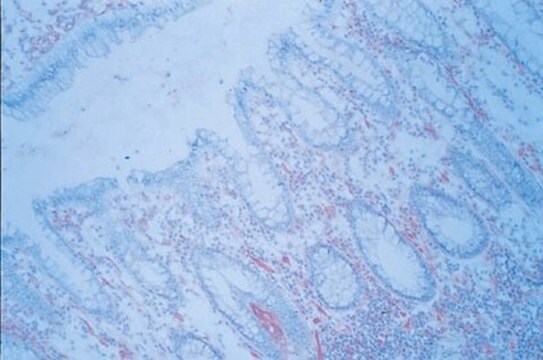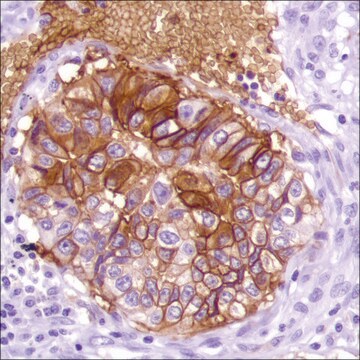MABS132
Anti-GLUT1 (CT) Antibody, clone 5B12.3
clone 5B12.3, from mouse
Sinónimos:
Solute carrier family 2 facilitated glucose transporter member 1, Glucose transporter type 1,erythrocyte/brain, GLUT-1, HepG2 glucose transporter
About This Item
Productos recomendados
origen biológico
mouse
Nivel de calidad
forma del anticuerpo
purified immunoglobulin
tipo de anticuerpo
primary antibodies
clon
5B12.3, monoclonal
reactividad de especies
human, rat
envase
antibody small pack of 25 μL
técnicas
immunohistochemistry: suitable
western blot: suitable
isotipo
IgG1κ
Nº de acceso NCBI
Nº de acceso UniProt
Condiciones de envío
ambient
temp. de almacenamiento
2-8°C
modificación del objetivo postraduccional
unmodified
Información sobre el gen
human ... SLC2A1(6513)
Descripción general
Especificidad
Inmunógeno
Aplicación
Signaling
Developmental Signaling
Calidad
Western Blot Analysis: 0.1 µg/mL of this antibody detected GLUT1 in 10 µg of NGF treated PC-12 cell lysate.
Descripción de destino
Forma física
Almacenamiento y estabilidad
Nota de análisis
NGF treated PC-12 cell lysate
Otras notas
Cláusula de descargo de responsabilidad
Not finding the right product?
Try our Herramienta de selección de productos.
Opcional
Código de clase de almacenamiento
12 - Non Combustible Liquids
Clase de riesgo para el agua (WGK)
WGK 1
Punto de inflamabilidad (°F)
Not applicable
Punto de inflamabilidad (°C)
Not applicable
Certificados de análisis (COA)
Busque Certificados de análisis (COA) introduciendo el número de lote del producto. Los números de lote se encuentran en la etiqueta del producto después de las palabras «Lot» o «Batch»
¿Ya tiene este producto?
Encuentre la documentación para los productos que ha comprado recientemente en la Biblioteca de documentos.
Nuestro equipo de científicos tiene experiencia en todas las áreas de investigación: Ciencias de la vida, Ciencia de los materiales, Síntesis química, Cromatografía, Analítica y muchas otras.
Póngase en contacto con el Servicio técnico








